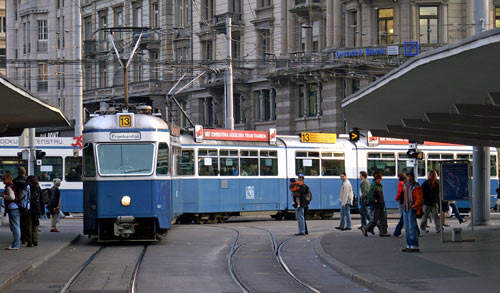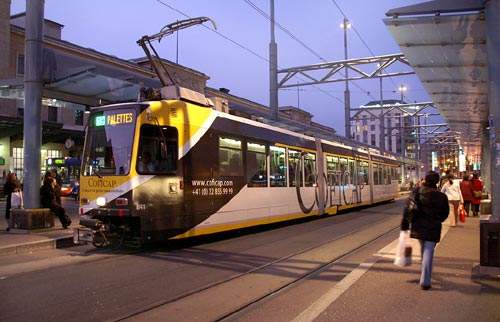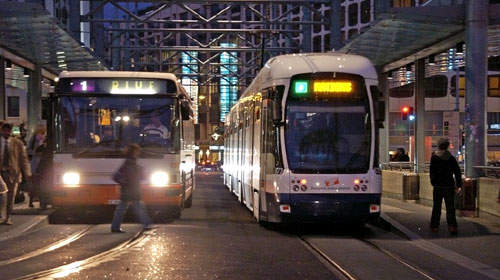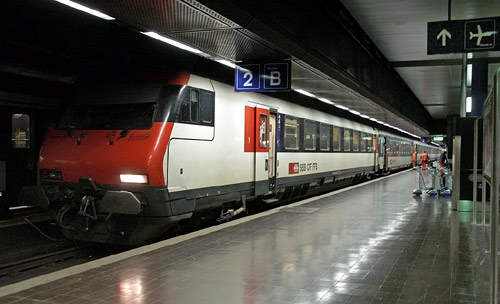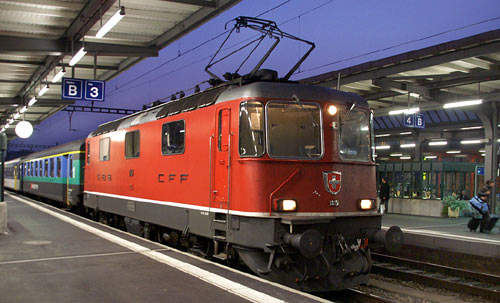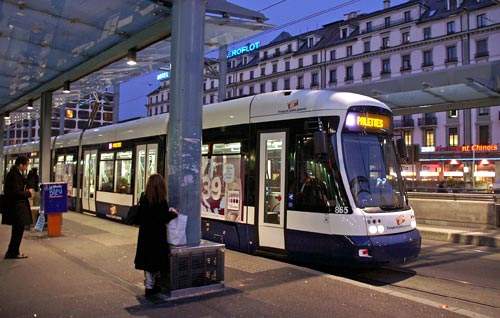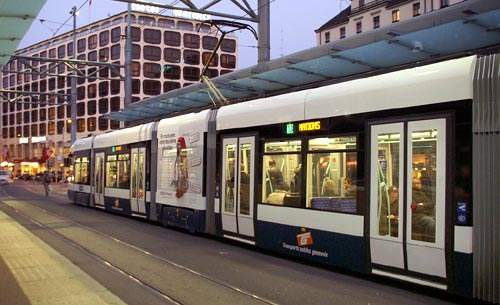Geneva is Switzerland’s second city and the largest in the Francophone part of the country. The canton of Geneva, population 445,000, is at the western end of Lake Geneva (Lac Léman), with the city, population 185,000, either side of the Rhône where it leaves the lake. The conurbation spreads across the French border, where the city’s transport companies operated services for many years, including now-closed lines from an extensive tram system that once totalled 75 miles (120km).
The imbalance of living costs between the two countries encourages commuting, with Geneva experiencing net inward morning and outward evening flows. Geneva revels in its international identity, being host to several international bodies, notably the UN, and home for many expatriate workers.
The project
Consistent with Swiss environmental concerns, a decision was made to return trams to Geneva, adding to the one route surviving from the earlier system, an 8km line wholly on the south bank of the Rhône. Although Geneva is never likely to match the comprehensive network in the largest Swiss city, Zürich, there is intent by operator Transports Publics Genevois (TPG) to greatly expand street-level light rail in future years.
TPG was founded in 1977 to combine and replace other administrations, and is now seeking to reduce the role of buses and trolley buses, which it also operates. Funding is thought to be secure for many of the projects envisaged.
Infrastructure
The system’s metre gauge was carried over from earlier tramways and features the widespread 750v dc overhead supply electrification. In spite of losing trams in 1965 and not regaining them until 1995, the main focal point for tram routes is immediately outside Cornavin SBB-CFS station, also a busy commercial area.
With Cornavin having a direct link to Geneva (Cointrin) International Airport in the city’s western suburbs, SBB local and intercity traffic, plus SNCF local and TGV services, the combined tram and bus stop is the busiest on the system.
There are many intersections with road traffic, especially in the central area, and reserved running on some sections such as the busy single bridge carrying tram routes across the Rhône south from Cornavin.
Rolling stock
The larger part of the Geneva fleet is made up of 44 articulated trams, Swiss-built to a Düwag (Siemens) design. Ordered as part of the tramway 1980s expansion project, these are a mix of two- and three-car part low-floor vehicles units, delivered 1985–1989.
The largest vehicles are the more modern 21 seven-module Bombardier City Runners (now classified by the company as Flexity Outlook). First ordered in late 2002 under a €57m contract, these double-ended 100% low-floor units can accommodate 238 passengers, with 66 seated.
Signalling and communications
As is common in Switzerland, there is a high level of communication with passengers at stops, aboard the trams and via the TPG website which features a cross-mode journey planner. The tramway forms part of the Unireso umbrella organisation, operating as common tariff administrator for public transportation in the Geneva area.
As well as passes, TPG offers a one-hour duration ticket for all modes, these of particular value to the many passing through the city.
The future
In December 2007, Geneva opened the extension from Cornavin to Les Avanchets, the first part of the Cornavin-Meyrin-CERN (TCMC) line. The third and final part that connects Alpine Garden at CERN was inaugurated in April 2011 .
In the north-west suburbs of Geneva close to the French border, CERN is the world’s largest particle physics laboratory with over 2,500 employees.
As with the 6.3km Cornavin-Onex-Bernex line opened in December 2011 to the south-west, if further extended the CERN line would see extension across the French border to settlements which are effectively Geneva dormitory towns
In addition to restructuring of routes, the scheduled system expansion will call for expansion of the current fleet. With tram-train operations as per Kassel of Karlsruhe precluded by TPG’s metre gauge tracks, future lines will give more interchanges with heavy rail and increase the number of park and ride sites.
Now emerging as a low-cost airline hub after the downturn caused by failure of Swissair and the takeover of its successor Swiss International by Lufthansa, Cointrin remains a possible tram destination under plans that could be ratified by 2013.

